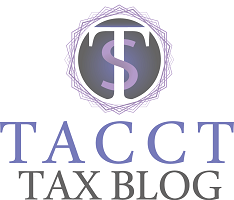
The Tax Cuts and Jobs Act of 2017 (TCJA) eliminated or modified numerous tax provisions starting in 2018. Here’s what individuals and families need to know as they get ready for tax season.
Individual Tax Changes
Personal Exemptions
Personal exemptions are eliminated for tax years 2018 through 2025.
Standard Deductions
The standard deduction for married couples filing a joint return in 2018 is $24,000. For singles and married individuals filing separately, it is $12,000, and for heads of household, the deduction is $18,000.
The additional standard deduction for blind people and senior citizens in 2018 is $1,300 for married individuals and $1,600 for singles and heads of household.
Income Tax Rates
In 2018, the top tax rate of 37 percent affects individuals whose income exceeds $500,000 ($600,000 for married taxpayers filing a joint return). Marginal tax rates for 2018 are as follows: 10%, 12%, 22%, 24%, 32%, 35%, and 37%. While the tax rate structure remains similar to prior years (i.e., with seven tax brackets), the tax-bracket thresholds increased significantly for each filing status under tax reform.
Estate and Gift Taxes
In 2018, there is an exemption of $11.18 million per individual for estate, gift, and generation-skipping taxes, with a top tax rate of 40 percent. The annual exclusion for gifts is $15,000.
Alternative Minimum Tax (AMT)
For 2018, exemption amounts increased to $70,300 for single and head of household filers, $109,400 for married people filing jointly and for qualifying widows or widowers, and $54,700 for married taxpayers filing separately.
Flexible Spending Account (FSA)
A Flexible Spending Account (FSA) is limited to $2,650 per year in 2018 (up from $2,600 in 2017) and applies only to salary reduction contributions under a health FSA. The term “taxable year” as it applies to FSAs refers to the plan year of the cafeteria plan, which is typically the period during which salary reduction elections are made.
Long-Term Capital Gains
In 2018, tax rates on capital gains and dividends remain the same as 2017 rates (0%, 15%, and a top rate of 20%); however, threshold amounts are different in that they don’t correspond to the tax bracket structure as they did in the past. For example, taxpayers whose income is below $38,600 for single filers and $77,200 for married filing jointly pay 0% capital gains tax. For individuals whose income is at or above $425,800 ($479,000 married filing jointly), the rate for both capital gains and dividends is capped at 20 percent.
Itemized Miscellaneous Deductions
Miscellaneous deductions exceeding 2% of AGI (adjusted gross income) are eliminated for tax years 2018 through 2025. As such, you can no longer deduct on Schedule A expenses related to tax preparation, moving (except for members of the Armed Forces on active duty who move because of a military order), job hunting, or unreimbursed employee expenses such as tools, supplies, required uniforms, travel, and mileage. Business owners are not affected and can still deduct business-related expenses on Schedule C.
2018 Tax Highlights Video
Follow us: @the_tax_lady | TACCT on Facebook
Read our Tax Insight Newsletters
Schedule a Tax Appointment




